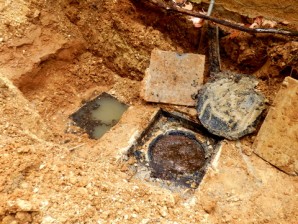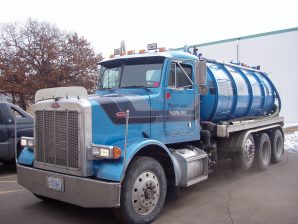A grease trap (also known as a grease interceptor or grease recovery device) is a tank designed to separate FOG (Fats, Oils and Grease). Fats, oils and grease originate from kitchen sinks and floor drains that are connected on the grease line. Dish washing, hood cleaning and floor scrubbing are all avenues for grease to enter the sewer line. While it may go unnoticed to most, grease trap cleaning is crucial to ensure sewer lines flow properly.

Grease trap lid
Locate Your Grease Trap
It is important to know where your grease trap is so you can manage it properly. The location of the grease trap is dependent on size and available space. Most internal grease traps are 50 gallons or less. Some traps are large external tanks that can hold up to 2000 gallons of liquid.
Cities Require Grease Trap Cleaning
Most cities require commercial kitchens to install grease traps to prohibit large amounts of grease from entering the sanitary sewer system. In some cases, restaurant’s without grease traps have caused major blockages in the city sanitary sewer. The backups can lead to large fines and clean up cost to the owners. Grease trap cleaning contracts are now required by some cities before plumbing inspection are completed. Grease haulers take the unwanted brown grease and dispose of it at proper liquid waste disposal facilities.
Traps can overflow and shut your restaurant down causing lost revenue and expensive clean-up costs. The cost of grease trap cleaning pales in comparison to the cost of these expensive clean-ups. Grease trap cleaning, on a preventative basis will prolong the life of your grease trap and keep it functioning properly. Overall, The cost of grease trap cleaning, in the long term, will save you thousands of dollars.



